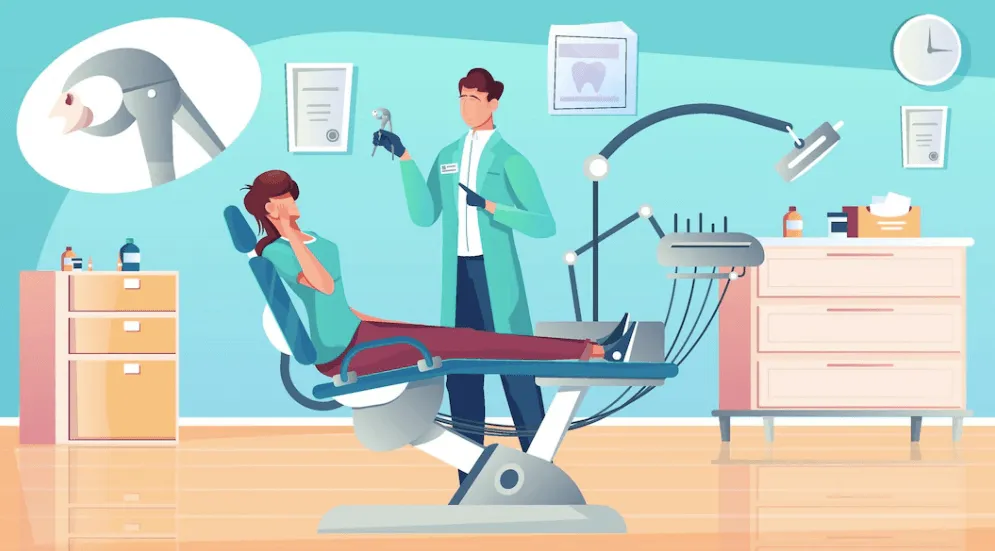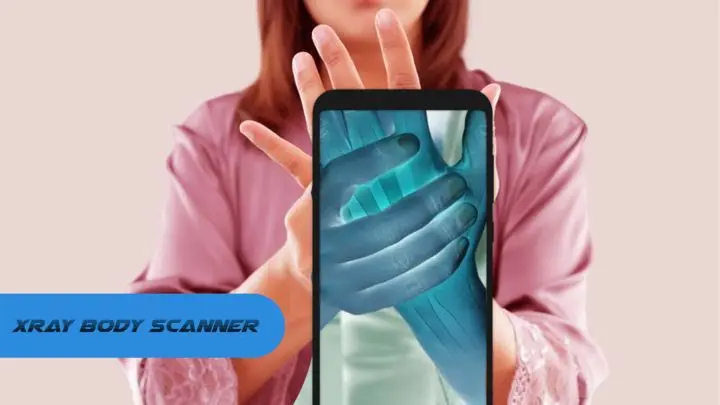Health
Cymbalta Ruined My Life: A Personal and Eye-Opening Story

Health
Dentistry Work Experience in London: Top Clinics and University Programmes

London has some world-class dental schools (think King’s College London Dental Institute, Queen Mary University of London, UCL Eastman). But here’s the rub: work experience placements are fiercely competitive. The big city draws applicants from everywhere, so spots go very fast.
Also, because of strict NHS and university regulations, you might find that getting hands-on (as in, drilling and filling) is tightly controlled. Shadowing’s easy, but true dentistry work experience can be limited to observing unless you’re already pretty far along in your training.
Common Hurdles in London
- High demand, low availability: Lots of students, limited spots.
- Red tape—Health and safety, patient confidentiality, and insurance can make it tricky for clinics to take on students for more than just shadowing.
- Cost of living—Not directly about work experience, but London isn’t cheap.
Clinics vs. University Programs
Dental Clinics
If you’re gunning for hands-on skills, clinics are the real deal. There you’ll see real patients, real-time challenges, and get to shadow seasoned pros who’ve been around the block. There’s a certain “street smarts” you pick up here: patient communication, handling nerves (yours and theirs!), and dealing with the unpredictable.
- Pros—Direct patient care, mentorship from practicing dentists, networking with local professionals, and a taste of the day-to-day grind.
- Cons—Sometimes you might get stuck watching more than doing, and clinics can be busy, so teaching moments might be a bit rushed.
Private practices in central London (think Harley Street) are prestigious, but often harder to get into. NHS community clinics might be more accessible and give a broader patient mix. Some hospitals (like Guy’s and St Thomas’) have dental departments open to student observation—worth checking out.
University Programs/Placements
University-run work experience tends to be more structured. You’ll often rotate through departments, get feedback, and maybe even dip into research or academic side-projects. If you’re thinking about teaching, research, or specialisms down the line, this gives you a broader lens.
- Pros—Organized learning objectives, exposure to academic research, easier access to supervisors, and sometimes a more nurturing environment for newbies.
- Cons—Might be a bit more “by the book,” and sometimes less intense on the real-world drama.
There’s no one-size-fits-all. Your ideal path probably blends both worlds. Let your curiosity and your future plans be your compass. Every awkward first impression, every day of just watching, and every “a-ha” moment builds your skillset and your confidence already.
Doc’s Recommendations
- Mix it up. Try to land a university placement for the academic breadth, then hustle for extra clinic shadowing, even if it’s just a day here or there.
- Network like crazy. Sometimes, it’s the dentist you met at a seminar who’ll let you tag along for a week.
- Think long-term. If academia or teaching might be your thing, university programs give you the inside track. But if you want to hit the ground running as a practitioner, clinics give you the grit.
The One Big Question to Ask Yourself
Before you chase a clinic or a uni placement, pause and ask: “What kind of dentist (or dental professional) do I want to become—and what environment will push me most in that direction?”
Drill down further:
- Do you thrive in the buzz and unpredictability of real-life cases (clinic style)?
- Or do you love structured learning, research, and maybe even see yourself teaching or becoming a specialist (university side)?
- Which kind of challenge excites you more: solving practical day-to-day puzzles, or exploring the “why” behind them?
- Do you want to make a difference in a community, or push the boundaries of dental science?
Sometimes, the “right” path is the one that makes you a bit nervous, but also lights you up inside. If you can, shadow both for a bit—even just for a day. Notice where you feel most yourself.
Networking: The Backdoor Approach
The best opportunities often live just beyond the beaten track.
Tap Alumni Networks
Every dental school has alumni who love helping out curious students. Find them on LinkedIn or your uni’s alumni portal. A message along the lines of, “Hi Dr. Smith, I’m an aspiring dentist at [your school] and would be super grateful for 15 minutes of your advice on finding meaningful work experience in London,” works wonders.
Dental Societies & Conferences
Even if you’re not a member, student tickets or volunteering at dental events puts you in the same room as decision-makers. Shake hands, ask smart questions, and follow up with a quick thank-you email.
Specialty Interest Groups
Are you into orthodontics, pediatric dentistry, oral surgery? Join their student branches or attend a lecture. The smaller the group, the more likely someone will notice and help you out.
Leverage Social Media (Tastefully!)
Did you read an article or see a local dentist featured online? Drop them a thoughtful message saying what you liked about their work and ask for a quick chat. Enthusiasm (not flattery) always gets noticed.
Get Creative with Your Ask
Instead of just “Can I shadow you?”, try “Is there a project or audit I could help with?”
or
“Would you be open to letting me observe a part of your week that most students never see?”
People love sharing their passion projects. Sometimes you’ll be the only one who asked!
Keep a Curiosity Log
After each conversation, jot down what surprised you or made you think. Referencing these details in future chats makes you memorable—and shows you genuinely care.
Secret Sauce: Follow-Up
Don’t forget the power of a sincere thank-you note. Mention something specific you learned or enjoyed. It’s old-school, but it works.
Every “crazy” approach that’s respectful, genuine, and persistent is just another way of saying, “I care enough about this to try harder than most.”
And that’s the stuff that opens doors—sometimes the ones nobody else even noticed.
How to Write a Banging Application Email
Let’s craft a “banging” application email that stands out, feels authentic, and leaves the reader thinking, “Wow, I want to meet this person.”
You’ve got the spark—this email just helps others see it. No stress is needed, every “no” just gets you closer to the right “yes.”
Subject: Curious Dental Student Seeking Real-World Wisdom (and a Chance to Help!)
Hi Dr. [Last Name],
Hope this finds you well! My name is [Your Name], and I’m a dental student at [Your University]. I’m writing because I’m hungry (in the best way) for some hands-on dental experience—and I’ve heard that your clinic/team is one of the best places in London to really learn what dentistry is all about.
I’ll be honest: I’m not just looking to tick a box for my CV. I want to see the real day-to-day work, the “aha!” moments—successes and messes equally matter.
If there’s a chance to shadow you, help out with a project, or even just observe the flow of the clinic for a short time, I’d be thrilled. I’m eager to learn, not afraid of hard work, and will bring my best questions, my best attitude—and my own stash of coffee if needed!
If you have a few minutes to chat, or might consider letting me observe your work, I’d be truly grateful. Either way, thank you for inspiring new dentists like me to aim higher.
Warm regards,
[Your Name]
[Contact info if needed]
Why This Works
- Personal—You use their name and reference their clinic or work.
- Honest—You say what you want and why.
- Memorable—You sprinkle in some humor.
- Respectful—You acknowledge their time and leave the door open.
Pro Tip
Send it early in the week (Monday or Tuesday), and always follow up politely if you don’t hear back in a week or so. Persistence isn’t annoying—it’s professional!
Health
Wellbutrin withdrawal: How to cope and what to expect?

Wellbutrin or bupropion is the most commonly prescribed antidepressant because of its unique mode of action. It is not like other antidepressants and does not attack serotonin – rather, it works on dopamine and norepinephrine. While most often it is praised because of its activating effects and minimum weight gain, stopping it abruptly can lead to some withdrawal symptoms.
Suppose you or someone you care about is thinking of stopping Wellbutrin abruptly. In that case, a better understanding of the withdrawal process can help decrease fear, manage symptoms, and promote a safe and well-balanced transition.
Cause of Wellbutrin Withdrawal
Antidepressants function by changing the brain chemistry with time. When the body adapts to those changes, stopping them abruptly can cause temporary balance in the brain. This is called antidepressant discontinuation syndrome and even if Wellbutrin possesses low risk when compared with SSRIs, withdrawal is still real for so many users.
Symptoms arise because dopamine and norepinephrine – two important neurotransmitters that Wellbutrin affects, play an important role in motivation, mood, and energy. When the brain does not get the stimulation it has gotten used to, it takes time to recalibrate.
Common Symptoms Of Wellbutrin Withdrawal
Not all will experience Wellbutrin withdrawal in the same way. Some might get only mild symptoms, while others might struggle with emotional and physical symptoms. Some of the common symptoms are:
- Irritation
- Anxiety
- Mood swings
- Headache
- Dizziness
- Insomnia
- Vivid dreams
- Digestive problems such as nausea or stomach pain
- Chills and sweating
Symptoms primarily begin within a few days after stopping the medicine and last from a few days to several weeks, based on dosage, use duration, and individual sensitivity.
Duration of Wellbutrin Withdrawal
Withdrawal from Wellbutrin is short-lived when compared with other kinds of antidepressants because of its short half-life. For most people, symptoms typically appear within 2-4 days of stopping the medication and begin to improve after 1-2 weeks.
However, some of the individuals, mainly those on high doses or those who stop suddenly, might experience symptoms for a few months. Emotional and cognitive symptoms such as brain fog or low mood – might sometimes linger longer than physical ones.
One of the best ways to minimize the withdrawal symptoms is tapering the medication slowly under medical supervision. Slowly reducing the dose gives the brain some time to adjust and prevent shock to the system.
Doctors may decrease your dosage over several weeks based on how long you have been taking Wellbutrin and your response to previous changes in dosage. This makes the whole transition very smooth and assists in avoiding the relapse of anxiety or depression.
Management Of Symptoms Naturally
If you are facing withdrawal symptoms, here are a few ways to support your recovery:
- Stay well-hydrated and nourished: Withdrawal often causes depletion of your energy. Eating well-balanced meals, avoiding caffeine and alcohol, and remaining well-hydrated can support the healing process of your body.
- Get the required amount of sleep: Insomnia and vivid dreams are frustrating. Practicing good sleep routines, such as calming bedtime rituals, avoiding screen time before bed, and maintaining consistent sleep schedules, can help enhance rest.
- Gentle exercise: Light physical activity such as walking, stretching, and yoga can give a boost to mood and helps in decreasing anxiety. It also assists in regulating dopamine naturally.
- Lean on support: Talk to someone you can trust, such as a counselor, a friend, or a family member. Withdrawal can make someone feel isolated, and mental support can make a big difference.
- Keep track of your symptoms: Keeping track of how you are feeling daily can help you recognize patterns and reassure you that the symptoms are temporary and improving.
When to look for Help?
While most people recover from Wellbutrin withdrawal well with time and proper care, it’s essential to know when to look for assistance. Contact your healthcare provider when:
- The symptoms are worsening or are not bearable
- You are experiencing suicidal thoughts or depression
- Physical symptoms such as heart palpitation, dizziness, or tremors are causing interference with daily life.
A healthcare provider can do a better evaluation of whether a slow taper, alternate medicine, or any supportive therapy is required.
Wellbutrin withdrawal can be very much frustrating as well as emotionally draining. But it’s not a permanent process. With the right kind of knowledge, a well-supportive plan, and patience, people recover completely and go forward stronger. If you are thinking of stopping Wellbutrin or you are in the middle of withdrawal, keep in mind – that what you are thinking is valid and you are not suffering alone. Healing is not always linear but every step forward counts.
Conclusion
Antidepressants such as Wellbutrin play an important role in the treatment of mental health. But like starting, stopping them should also be careful. Listen to your body, work with a healthcare professional, and give yourself grace during this kind of adjustment. There is no shame in asking for assistance – whether it means medication, a supportive community, or therapy. Your mental wellness is a pathway worth honoring – every step of the way.
Health
Why X-ray Camera Scanners Are Critical for High-Traffic Public Spaces

In a world marked by rising security concerns, the demand for proactive and precise threat detection in high-traffic public areas has become more urgent than ever. As cities grow denser and transport hubs more crowded, the need for dependable surveillance and screening systems has escalated. Among the most critical technologies that stand at the frontlines of public safety is the X-ray Camera Scanner.
These scanners have moved beyond traditional baggage checks to become vital components in comprehensive security infrastructures. Whether installed in airports, railway stations, government buildings, stadiums, or shopping malls, they offer unmatched efficiency in detecting threats that may otherwise go unnoticed. But what exactly makes the X-ray Camera Scanner so essential in high-traffic environments?
The Mechanism Behind X-ray Camera Scanning
An X-ray Camera Scanner functions by emitting controlled X-ray beams through objects such as bags, parcels, and even cargo containers. As these beams pass through materials, they are absorbed at different rates depending on the density and atomic number of the contents. The scanner then captures this data and converts it into high-resolution images using sophisticated image processing algorithms.
What sets modern X-ray scanners apart is the integration of intelligent software that can automatically highlight potentially hazardous or prohibited items. Advanced systems are also capable of color-coding different materials—organic, inorganic, or metallic—making it easier for security personnel to interpret images quickly and accurately.
Challenges in High-Traffic Public Spaces
High-traffic public spaces pose unique challenges. With thousands—sometimes millions—of people moving through a single location each day, maintaining a balance between security and convenience is complex. Traditional manual inspection methods are slow, labor-intensive, and prone to human error. They not only cause delays but also create bottlenecks, which can increase crowding and compromise safety.
Moreover, threats in these environments aren’t always obvious. Concealed weapons, explosives, or smuggled contraband can be hidden within everyday items. This makes it imperative to deploy screening systems that are not only fast but also capable of identifying even the most cleverly disguised threats without disrupting the flow of movement.
Why the X-ray Camera Scanner Stands Out
The X-ray Camera Scanner addresses these challenges head-on. It provides a non-intrusive way to inspect belongings with remarkable speed and accuracy. Unlike metal detectors that are limited to identifying metallic threats, X-ray scanners can detect a wide range of materials, including plastic explosives, narcotics, and hidden electronics.
In high-traffic settings like airports or metro stations, speed is crucial. Modern scanners are designed to process thousands of bags per hour without compromising on image quality. Their ability to scan multiple layers and produce detailed images ensures that nothing is left to chance. Additionally, integrated Artificial Intelligence (AI) in advanced models enhances threat detection by flagging suspicious shapes or densities, thereby reducing operator fatigue and increasing overall accuracy.
Enhancing Public Confidence
Security measures are not only about actual threat prevention but also about creating a perception of safety. The presence of sophisticated X-ray Camera Scanners in visible checkpoints contributes to public reassurance. When people see that robust screening measures are in place, they are more likely to feel secure and cooperative, which in turn fosters a more orderly environment.
This psychological effect is especially important in places like entertainment venues, where maintaining a relaxed atmosphere is key. Knowing that everyone’s belongings are being effectively scanned without unnecessary delays helps maintain calm, even during peak hours or high-alert periods.
Scalability and Versatility
Another advantage of the X-ray Camera Scanner is its scalability. These systems can be configured for various settings—from compact units for small venues to large tunnel-based systems for cargo and logistics hubs. In high-traffic spaces, modular designs allow for multiple scanners to be installed in parallel, distributing foot traffic and reducing waiting times.
Moreover, these scanners are versatile enough to be used across different sectors. While transportation hubs are the most common deployment sites, high-end commercial complexes, judicial courts, educational campuses, and exhibition centers also rely on them to enforce safety protocols. Their ability to adapt to different threat profiles and user requirements makes them an indispensable tool in the broader security ecosystem.
Data Integration and Centralized Monitoring
Today’s security demands go beyond mere detection. There’s a growing need to integrate scanning systems into centralized surveillance networks. Many X-ray Camera Scanners are equipped with remote monitoring capabilities, allowing security teams to analyze images in real time or archive them for future investigation.
Centralized monitoring is particularly useful in large facilities with multiple access points. A central command center can oversee all scanners, assess threat levels, and dispatch response teams instantly. This layered security approach minimizes response time and ensures that any threat is dealt with swiftly and effectively.
Conclusion
In a rapidly evolving world where public spaces are becoming more crowded and threats more sophisticated, the X-ray Camera Scanner serves as an essential component of modern security architecture. Its speed, accuracy, and adaptability make it uniquely suited for high-traffic environments where efficiency and vigilance must coexist.
By providing real-time, non-intrusive, and comprehensive screening, these scanners help safeguard not just infrastructure but the lives that move through it every day. Investing in advanced scanning technology is not just about preventing the worst—it’s about enabling the best outcomes for public safety, operational continuity, and social confidence.
-

 Sports4 months ago
Sports4 months agoThe Ultimate Guide to Ski and Snowboard Equipment, Ski Equipment Rental, and Snowboard Equipment Rental
-

 Entertainment7 months ago
Entertainment7 months agoHulu Error Code Rununk13: A Complete Guide
-

 General7 months ago
General7 months agoStart-094: Unlocking Its Secrets and Understanding Its Power
-

 Entertainment5 months ago
Entertainment5 months agoSoaper.tv: A Comprehensive Guide to Your Streaming Companion
-

 Uncategorized4 months ago
Uncategorized4 months agoOceanofPDF: Free eBooks Source or Copyright Violation?
-

 Games5 months ago
Games5 months agoPizza Edition Games: The Ultimate Guide to Fun and Flavor
-

 Technology7 months ago
Technology7 months agoWhy SBCodez is the Go-To Resource for Aspiring Coders
-

 Entertainment6 months ago
Entertainment6 months ago123movies: The Ultimate Guide to Free Online Movie Streaming
